You are trying to access the old NJSP website. You will be redirected to the new website automatically
Please bookmark the NEW website link at https://www.njsp.gov
Drug Laboratory
The Office of Forensic Sciences Drug Units analyze more than 40,000 drug cases each year. The cases submitted are suspected to contain controlled dangerous substances. Controlled dangerous substances in the state of New Jersey encompass a wide range of compounds both naturally occurring substances, such as marijuana to clandestinely manufactured compounds, like synthetic cannabinoids, “bath salts”, or ecstasy. Controlled substances can be broken down into different groups: Narcotics, Stimulants, Depressants, Hallucinogens, Anabolic Steroids, and Designer Drugs. Analysis of the substances is done using state of the art instrumentation and methodologies. The Office of Forensic Science follows the most current Controlled Dangerous Substance (CDS) Law for the State of New Jersey which can be found on the New Jersey Legislator page: www.njleg.state.nj.us. New Jersey Permanent statutes P.L.2019, Ch. 194, Title 2C New Jersey code of Criminal Justice: https://lis.njleg.state.nj.us/nxt/gateway.dll?f=templates&fn=default.htm&vid=Publish:10.1048/Enu
The Office of Forensic Sciences collaborates with the Division of Consumer Affairs in tracking trends of new drug use and in the scheduling the new drugs as CDS’s. The NJ Code of criminal justice, 2C, is the statute for which all the analyses, policy and procedures are based.
https://www.njconsumeraffairs.gov/regulations/Chapter-45H-Controlled-Dangerous-Substances.pdf
Agilent Technologies GCMS with robotic ALS apparatus
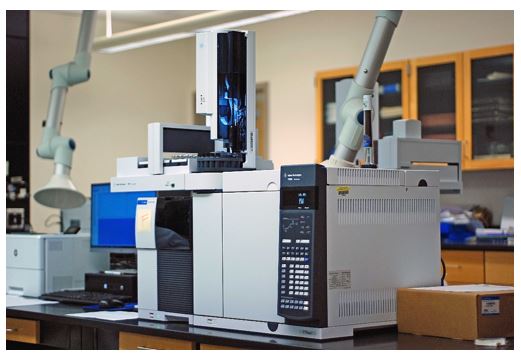
Common drugs the Office of Forensic Science Laboratory encounters
Cocaine
Cocaine is a common stimulant derived from the Erythroxylum coca plant. Cocaine is an extremely addictive drug. The powdered hydrochloride salt form of cocaine can be snorted or dissolved in water and then injected. Crack is the street name given to the form of cocaine that has been processed to make a rock crystal, which, when heated, produces vapors that are smoked. The term “crack” refers to the crackling sound produced by the rock as it is heated. Cocaine is a Schedule II drug under the Controlled Substances Act of 1970, meaning that it has high potential for abuse, but can be administered by a doctor for legitimate medical uses, such as local anesthesia for some eye, ear, and throat surgeries.

Heroin
 Heroin is a highly addictive drug derived from morphine, which is obtained from the opium poppy. It affects the brain's pleasure systems and interferes with the brain's ability to perceive pain. Heroin can be used in a variety of ways, depending on user preference and the purity of the drug.
Heroin is a highly addictive drug derived from morphine, which is obtained from the opium poppy. It affects the brain's pleasure systems and interferes with the brain's ability to perceive pain. Heroin can be used in a variety of ways, depending on user preference and the purity of the drug.
Heroin can be injected into a vein ("mainlining"), injected into a muscle, smoked in a water pipe or standard pipe, mixed in a marijuana joint or regular cigarette, inhaled as smoke through a straw, known as "chasing the dragon," or snorted as powder via the nose. More than half of the seized heroin contains synthetic opioids, or fentanyl.
Fentanyl
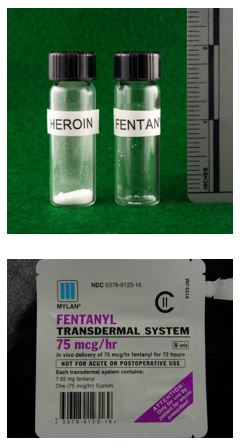 Pharmaceutical fentanyl is a synthetic opioid pain reliever, approved for treating severe pain, typically advanced cancer pain. It is 50 to 100 times more potent than morphine. It is prescribed in the form of transdermal patches or lozenges and can be diverted for misuse and abuse in the United States. However, most recent cases of fentanyl-related harm, overdose, and death in the U.S. are linked to illegally made fentanyl. It is sold through illegal drug markets for its heroin-like effect. It is often mixed with heroin and/or cocaine as a combination product—with or without the user’s knowledge—to increase its euphoric effects.
Pharmaceutical fentanyl is a synthetic opioid pain reliever, approved for treating severe pain, typically advanced cancer pain. It is 50 to 100 times more potent than morphine. It is prescribed in the form of transdermal patches or lozenges and can be diverted for misuse and abuse in the United States. However, most recent cases of fentanyl-related harm, overdose, and death in the U.S. are linked to illegally made fentanyl. It is sold through illegal drug markets for its heroin-like effect. It is often mixed with heroin and/or cocaine as a combination product—with or without the user’s knowledge—to increase its euphoric effects.
Deaths involving synthetic opioids has been doubling each year since the New Jersey State Police has been tracking the trends.
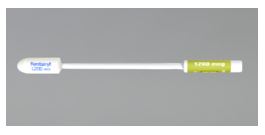
Marijuana
 Marijuana, the most often used illegal drug in this country, is a product of the hemp plant, Cannabis sativa. The main active chemical in marijuana is THC (delta-9-tetrahydrocannabinol). Of the roughly 400 chemicals found in the cannabis plant, THC has the most effect on the brain. Marijuana is a green or gray mixture of dried, shredded flowers and leaves of the hemp plant (Cannabis sativa). Recently, marijuana has been approved for medical use in New Jersey and several other states.
Marijuana, the most often used illegal drug in this country, is a product of the hemp plant, Cannabis sativa. The main active chemical in marijuana is THC (delta-9-tetrahydrocannabinol). Of the roughly 400 chemicals found in the cannabis plant, THC has the most effect on the brain. Marijuana is a green or gray mixture of dried, shredded flowers and leaves of the hemp plant (Cannabis sativa). Recently, marijuana has been approved for medical use in New Jersey and several other states.
Most users roll loose marijuana into a cigarette called a "joint". It can be smoked in a water pipe, called a "bong", or mixed into food or brewed as tea. It has also appeared in cigars called "blunts".
Designer Drugs

Designer drugs are synthetic versions of a controlled dangerous substance. Designer drugs usually are synthesized for the first time in an attempt to create a chemical whose molecular structure differs only slightly from that of some well-known controlled substance but whose effects are essentially the same. Because of the difference in molecular structure, the designer drug, unlike the controlled substance, ordinarily will not be specifically listed as illicit by law-enforcement organizations. Many designer drugs are manufactured in clandestine laboratories, often by amateurs. New Jersey considers these drug classes unsafe and has taken steps to make the newest designer drugs, “Bath Salts” and Synthetic Cannabinoids (Marijuana) illegal in New Jersey.
For more information:
https://www.njconsumeraffairs.gov/designer/bs.htm
Clandestine Pills
Pills illegally manufactured outside of a pharmaceutical company are considered Clandestine Pills. Non-pharmaceutical fentanyl is frequently referred to as illicitly manufactured fentanyl (IMF). IMF is often mixed with heroin and/or cocaine or pressed into counterfeit pills—with or without the user’s knowledge. The user may think they are buying an Oxycodone pill, where the markings may indicate Oxycodone, the clandestinely manufactured tablets may contain any number of Controlled substances, a synthetic opioid (Acetyl Fentanyl, furanyl fentanyl, etc), Fentanyl, or Heroin. Any of these substances may be in a concentration that is potentially lethal, as they are not manufactured by a reputable pharmaceutical company.
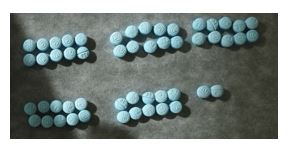
Pills in every class of drugs are being clandestinely manufactured. Physically they may look like a pharmaceutical, but chemically they prove to be completely different. The chance that you are purchasing a lethal/toxic dose in a pill purchased on the street is as real as purchasing a glassine containing a lethal dose.
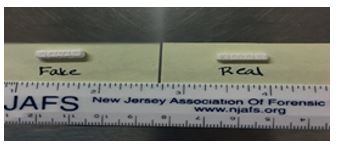
MDMA (Ecstasy)
 MDMA or Ecstasy (3-4-methylenedioxymethamphetamine) is a synthetic drug with amphetamine-like and hallucinogenic properties. It is classified as a stimulant. Ecstasy comes in a tablet form that is often branded, e.g. Playboy bunnies, Nike swoosh, skull and crossbones.
MDMA or Ecstasy (3-4-methylenedioxymethamphetamine) is a synthetic drug with amphetamine-like and hallucinogenic properties. It is classified as a stimulant. Ecstasy comes in a tablet form that is often branded, e.g. Playboy bunnies, Nike swoosh, skull and crossbones.
Taken in pill form, users sometimes take Ecstasy at "raves," clubs and other parties to keep on dancing and for mood enhancement.
Methamphetamine
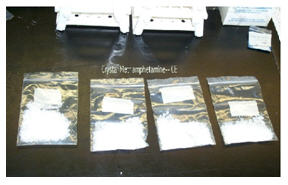 Methamphetamine is a crystal-like powdered substance that sometimes comes in large rock-like chunks. When the powder flakes off the rock, the shards look like glass, which is another nickname for meth.
Methamphetamine is a crystal-like powdered substance that sometimes comes in large rock-like chunks. When the powder flakes off the rock, the shards look like glass, which is another nickname for meth.
Methamphetamine is usually white or slightly yellow, depending on the purity. Methamphetamine can be taken orally, injected, snorted, or smoked.
Inhalants
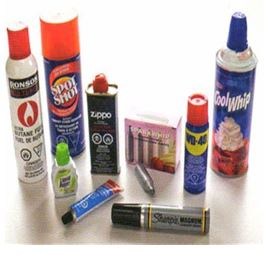 Inhalants are ordinary household products that are inhaled or sniffed by young people to get high.
Inhalants are ordinary household products that are inhaled or sniffed by young people to get high.
There are hundreds of household products on the market today that can be misused as inhalants. Examples of products kids abuse to get high include model airplane glue, nail polish remover, cleaning fluids, hair spray, gasoline, the propellant in aerosol whipped cream, spray paint, fabric protector, air conditioner fluid (freon), cooking spray and correction fluid. These products are sniffed, snorted, bagged (fumes inhaled from a plastic bag), or "huffed" (inhalant-soaked rag, sock, or roll of toilet paper in the mouth) to achieve a high. Inhalants are also sniffed directly from the container.
The risk of sudden death with any given episode of inhalant use exceeds that presented with any other drug of abuse. Death has been noted to occur via a variety of cardiovascular, pulmonary, accidental, and violence-related mechanisms.
LSD
 LSD, Lysergic acid diethylamine, is the most common hallucinogen and is one of the most potent mood-changing chemicals.
LSD, Lysergic acid diethylamine, is the most common hallucinogen and is one of the most potent mood-changing chemicals.
It is manufactured from lysergic acid, which is found in ergot, a fungus that grows on rye and other grains. LSD is usually found on "blotter" paper (paper that is perforated into small squares). The squares or "tabs" may have been colored or have images printed on them.
Steroids
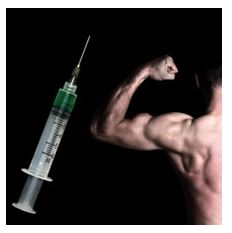
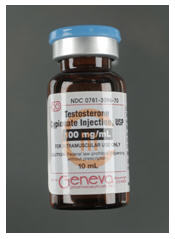 Anabolic steroids are a group of powerful compounds closely related to the male sex hormone testosterone. Current legitimate medical uses include treatment of certain kinds of anemia. Body builders, long-distance runners, cyclists and various other athletes who claim that steroids give them a competitive advantage and/or improve their physical appearance use these drugs illegally. Steroids come in tablets or liquid form.
Anabolic steroids are a group of powerful compounds closely related to the male sex hormone testosterone. Current legitimate medical uses include treatment of certain kinds of anemia. Body builders, long-distance runners, cyclists and various other athletes who claim that steroids give them a competitive advantage and/or improve their physical appearance use these drugs illegally. Steroids come in tablets or liquid form.
Anabolic steroids are taken orally or injected, and athletes and other abusers take them typically in cycles of weeks or months, rather than continuously, in patterns called cycling. Cycling involves taking multiple doses of steroids over a specific period of time, stopping for a period, and starting again. In addition, users frequently combine several different types of steroids to maximize their effectiveness while minimizing negative effects, a process known as stacking.
Oxycontin
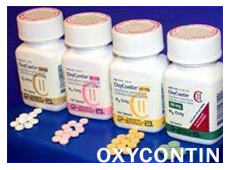 OxyContin (oxycodone HCI controlled-release) is the brand name for an opioid analgesic pain reliever-- a narcotic. It is available by prescription only and is used to treat moderate to severe pain when around-the-clock analgesic is needed for an extended period of time.
OxyContin (oxycodone HCI controlled-release) is the brand name for an opioid analgesic pain reliever-- a narcotic. It is available by prescription only and is used to treat moderate to severe pain when around-the-clock analgesic is needed for an extended period of time.
OxyContin is available in tablet form in 5 doses: 10, 20, 40, 80, and 160mg. As pain medication, OxyContin is taken every 12 hours because the tablets contain a controlled, time-release formulation of the medication. Oxycontin abusers remove the sustained-release coating to get a rapid release of the medication, causing a rush of euphoria similar to heroin.
More information regarding these and other controlled substances can be found:
https://www.dea.gov/drug-information



